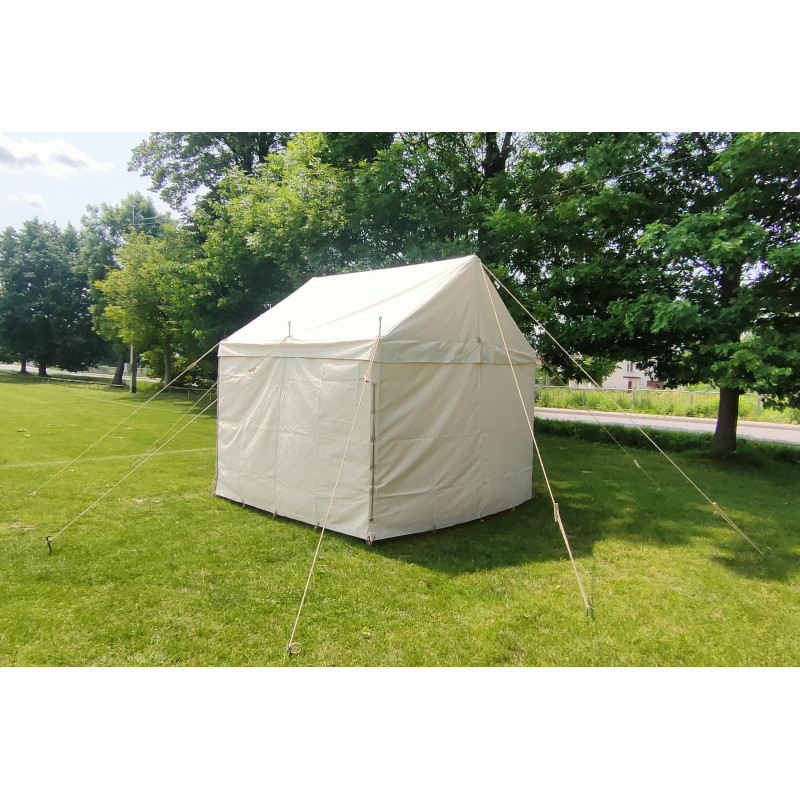










This tent is made of a high quality, impregnated cotton of 340 g/m2 grammage with antibacterial and rainproof properties.
This tent is made of a high quality, impregnated cotton of 310-340 g/m2 grammage with antibacterial and rainproof properties.
The barn has 3 x 3 x 3 m dimensions. It consists of 5 parts: 4 detachable walls and a separate roof.
Tents of this type can be found in numerous iconographic sources from the medieval period. Usually, similar models were used as a form of stock, or barn for horses during war expeditions.
The construction of a barn tent provides a very large usable area, requiring a small number of ropes. Frame construction also gives an option of expanding the storage space by joining a few tents.
There is an option of self-setting up a roof on a frame and using it as a form of shed.
A set consists of:
- 5 sheets: a roof and 4 walls - a frame: 2 scantlings of 3 m length each, 1 crossbar of 3 m of length; all divided in half and joined by metal profiles
- 6 side scantlings of 2 m of length each
- 27 tent pegs
- 2 anti-wind ropes, 10 m long each with loops in the middle
- 6 guy ropes, 4 m of long each

This tent is based on a frame. It is easy to unfold and has a large space inside. It can easily accommodate several people with equipment.
We sew tents from high-quality impregnated cotton with a weight of approximately 340 gr/m2, which has rainproof and anti-rot properties.

Tents of this type date to the second half of the 15th century. You can find them for example in the Swiss manuscript The Amtliche Berner Chronik (or Chronicle of Bern), dating to 1478-1483 r.